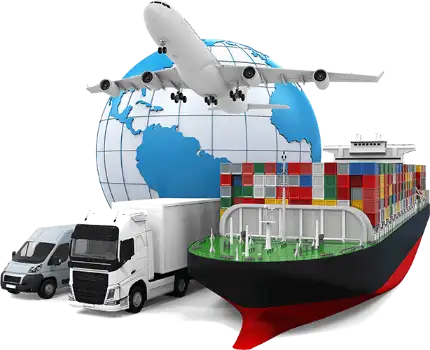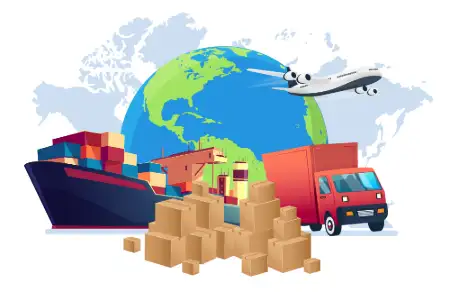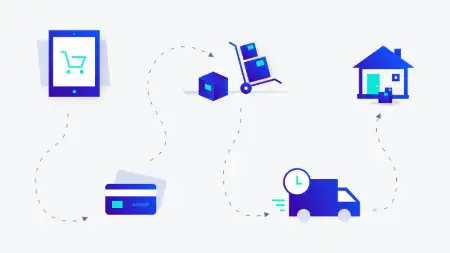Best One-stop Ecommerce Supply Chain Solutions
Work with the sourcing company that gives you professional advice on QUALITY Sourcing, SAFE Shipping, 24/7 Support, and COMPETITIVE Prices to build your E-commerce business rapidly.

Why choose SourcingAgent?
SourcingAgent consists of a team of knowledgeable and expert people who understand the international market well.
Explore Our one-stop Sourcing Services
SourcingAgent has the most up-to-date products to keep you up with the market trend. You find reliable SUPPLIERS with LOW-COST goods to fulfill your branding or manufacturing needs. Your business grows into the FIRST-RATED brand in your industry in no time.


SourcingAgent has the most up-to-date products to keep you up with the market trend. You find reliable SUPPLIERS with LOW-COST goods to fulfill your branding or manufacturing needs. Your business grows into the FIRST-RATED brand in your industry in no time.
We have years of experience in purchasing goods with COMPETITIVE prices for BRANDED dropshipping. You even get multi-channel shipping options to cut logistic costs and boost profits.


SourcingAgent offers a BROAD range of freight forwarding services to meet your delivery time and budget requirements. Be it air freight, sea freight, Amazon FBA shipping, Alibaba Shipping, or Door-to-Door shipment. We ship goods safely to you.
We’ve helped Thousands of companies worldwide fulfill orders and gain a great reputation. You get various choices like FBA prep, product bundling, and various shipping methods for efficient delivery service.

Request A Quote Now!
Send us your requirements, and we will get back to you shortly.
What Is The Ecommerce Supply Chain?
The ecommerce supply chain is made up of a number of logistical activities, including raw material procurement, final product production, warehousing, fulfillment, inventory management, and last-mile delivery. Furthermore, an e-commerce supply chain is often in charge of supply and demand, inventory management, and multiple delivery plans. E-commerce supply chain management’s key purpose is to assure quality products and consistent product offers, as well as to ensure customer pleasure with every order.
What is Supply Chain Management (SCM) ?
The supply chain is what keeps your company functioning smoothly. A well-managed supply chain guarantees the efficient flow of raw materials and the optimization of finished goods inventories. It provides monitoring from the moment of manufacturing through the delivery of goods to the customer.
Simply said, supply chain management refers to a set of actions that must be planned, controlled, and executed in order to plan, control, and execute the purchase, manufacture, and distribution of commodities to the end customer.
4 Advantages of a Simplified Ecommerce Supply Chain
Finding methods to simplify the supply chain improves not just internal operations, but it may also have a significant influence on the consumer experience. Here are four advantages of optimizing your ecommerce supply chain.
1. Reduced shipping times
Any delays in the supply chain, particularly in shipping, should be detected and addressed. Two key elements that influence shipment times are:
Where are your manufacturers, warehouses, and end customers?
Mode of conveyance (e.g., air, ocean, or freight) Shipping is one of the most critical processes to get right in the supply chain. It can help you decrease cart abandonment, gain a competitive edge, and even compete with Amazon’s equivalent offering.
2. Low-cost shipping charges
To optimize an ecommerce supply chain, look for methods to save delivery costs over time. Using the appropriate packaging for items depending on weight and dimensions, dividing inventory across geographic regions when cost-effective, and researching shipping savings from carriers based on order volume are some examples.
Choosing the best means of transportation may have a significant influence on shipping costs. Air expedited shipment is quick, but it is also expensive. Freight shipping, on the other hand, offers more cost-effective transportation solutions. LTL freight (less-than-truckload) allows shippers to combine their goods with the cargo of other shippers traveling in the same direction, for example. In this manner, you simply pay for your piece of the trailer rather than the entire trailer.
3. Reliable inventory management
Inventory management is critical to the ecommerce supply chain. You may do the following by optimizing inventory levels:
Improve stock control
Avoid overstocking and dead stock.
Estimate future demand
Inventory value should be simplified.
There are numerous approaches to addressing typical ecommerce inventory issues, including setting reorder points based on past order data and future estimates, reviewing inventory on a regular basis, and deploying inventory management software.
4. Improved customer experiences
A well-organized ecommerce supply chain means that you can provide the best possible client experience for every order. By identifying methods to enhance the supply chain, you may charge less for shipping, shorten delivery times, and lower the risk of human error caused by a poorly managed network.
As your ecommerce supply chain strengthens, you can devote more resources to increasing customer communication by allowing customers to track orders in real-time and giving them updates from the moment an order is processed to the time it is delivered.
What Are The Stages In The Ecommerce Supply Chain?
Each level of the ecommerce supply chain is vital and may play an important part in running a profitable ecommerce business. These stages are as follows:
Supply and demand in the market.
Supply and demand, as in other sectors, have a big influence on how a firm initiates pricing and how efficiently it can fulfill client orders.
To thrive at this stage, firms must establish a middle ground for product selection in which supply and demand are equal, resulting in a situation in which your goods and services match customer desire for them.
Flexibility is also important here, since being able to adapt and respond to market swings is in your best interests.
Inventory and warehousing management.
Warehousing is an essential component of the supply chain process, encompassing activities ranging from the storage of commodities through the packing of physical orders. It serves as the focal point for all of your receiving, storage, and distribution needs.
Many businesses use a warehouse management system (WMS) in conjunction with inventory management software to handle warehousing and inventory monitoring. This helps to strengthen their operations, monitor inventory levels, and keep things going smoothly.
Order management and entry.
The process of inputting an order slip into an order processing system, which then reclassifies it as a sales order, is known as order entry. Once this procedure is complete, firms can plan the actions required to execute the order, such as acquiring supplies, establishing special shipping standards, or approving invoicing.
Order management is a little different, since it refers to a process that interacts with nearly every stage of the ecommerce supply chain. It assists organizations in organizing their fulfillment duties, from order collecting through service availability.
A specialized order management system (OMS) may help firms by streamlining the order lifecycle, automating processes, and producing real-time data.
Delivery, distribution, and return.
Distribution and delivery are concerned with the transfer of goods from the original place of origin, such as a supplier or manufacturer, to the final point of sale. Distribution management entails tasks such as packing, storage, and shipping.
Returns are the inverse of the preceding process, with items returning to the seller from the final point of sale.
Understanding where products are and where they are going is crucial for reducing interruptions and preserving supply chain efficiency.
10 Ways For Optimizing The Ecommerce Supply Chain
Even if your supply chain is functioning well, merchandise is arriving on time, and consumers are receiving their purchases, there is always space for improvement in supply chain management. Optimizing the e-commerce supply chain allows your items to pass through various hands – from producers to warehouses, retailers, distributors, and finally to customers. Supply chains that are data-driven, fast-paced, and responsive aid in forecasting growth in online sales. Here are some tried-and-true methods for improving your e-commerce supply chain management:
Improve communication throughout your supply chain:
For e-commerce supply chain management, the flow of information across different supply chain nodes is crucial. Clear communication between stakeholders such as suppliers, manufacturers, warehouses, and distributors is critical for avoiding miscommunication or confusion and meeting consumer orders on time.
Management operations should be centralized:
Centralised administration of the e-commerce supply chain is a continuation of the preceding point, and it ensures that every link in your e-commerce supply chain functions in tandem. A lack of communication and coordination across links in your supply chain can be disastrous. You may achieve this aim with the aid of centralized management software solutions.
Adapt to developing mobile and internet technology:
Mobile or internet technology can help to improve the flow of information within the supply chain and manage client relationships. Use them to provide a more personalized shopping experience for your consumers and to optimize inventory to increase profit while decreasing expenses.
Outsource unnecessary processes:
Do not overwhelm yourself by attempting to handle every aspect of the supply chain in-house. This can harm your company by spreading your resources thin and diverting focus away from your primary business process. Because supply chain procedures like as storage, order fulfillment, and shipping are time-consuming, they may be outsourced. Outsourcing these allows you to concentrate on your key company capabilities.
Provide high-quality products:
To optimize your e-commerce supply chain, ensure that you are offering the greatest quality items at competitive rates and profitable expenses. Audit and renegotiate with your suppliers to ensure that you are achieving client expectations while being profitable.
Concentrate on the customer’s expectations and experience:
Focusing on your customers’ expectations, experiences, and needs helps you to understand the supply chain’s strengths and weaknesses and forecast future trends. These insights may be used to create a flexible and robust supply chain for better supply chain management.
Make use of analytics tools:
Analytics tools can assist you in analyzing this data and gaining meaningful insights. Make use of these technologies to better understand your clients and steer key business decisions appropriately.
Create a flexible supply chain:
Understanding your consumers and anticipating changes in their expectations is a wonderful strategy to establish an agile and responsive e-commerce supply chain. Forecast demand changes and emerging market patterns using information from POS systems and social media sites to swiftly adapt to these changes without reorganizing your supply chain or inventory too much.
Plan carefully:
Regardless of the phases in an e-commerce supply chain, planning is an essential component of supply chain management. It can help you avoid, control, or alleviate difficulties along the route, preventing your company from incurring unnecessary expenditures.
Avoid complacency in the supply chain:
It is not time to sit back and relax after you believe you have an optimized e-commerce supply chain. Continue to develop your supply chain in order to remain competitive and produce greater business results.
Conclusion
You can establish a more effective workforce by removing problems and increasing productivity by optimizing your ecommerce supply chain. By preventing stockouts, delivering better shipping prices, and shortening delivery times, you will eventually provide a better client experience.
With a worldwide fulfillment network, unique technology, and a team of professionals to help your business flourish, SourcingAgentsb can help you improve fulfillment logistics.
Ecommerce supply chain FAQs
Here are some of the most commonly asked questions concerning ecommerce supply chain optimization.
How do I optimize my e-commerce supply chain?
There are various approaches you may take to enhance your e-commerce supply chain. One option is to store merchandise in numerous key locations near your clients. You may save money on delivery by decreasing the average shipping zones for your goods. Implementing automation, using inventory management systems, and monitoring supplier performance are all popular strategies to enhance your supply chain.
How does the ecommerce supply chain work?
An ecommerce supply chain has many moving components, from shipping items from the producer to the distribution center to handling inventories and orders in real time. Technology and automation play an important role in improving communication and information transmission between suppliers and buyers, sellers and consumers, shipping carriers and sellers, and others.
How do you build an eCommerce supply chain?
- Collecting real-time data on your customers and their market demands.
- Sourcing vendors, suppliers or manufacturers.
- Converting raw materials into finished goods.
- Packing and storing products in warehouses in preparation for delivery.
What are the solutions of supply chain management?
- Manage and Drive Down Costs in the Supply Chain.
- Optimize Inventory and Supply Chain Demands Across Multiple Channels.
- Improve Quality and Speed in the Supply Chain.
- Manage and Mitigate Risks and Issues in the Supply Chain.
- Use the Right Supply Chain Software Platform.
What are the problems with supply chain in eCommerce?
eCommerce supply chains include unique difficulties such as inventory management, shipping prices, shipment speed, out-of-stock alerts, and more.
How do I start my own supply chain?
- Choose Your Inventory Assortment
- Forecast Demand
- Size Your Inventory Buys
- Track Your Purchase Orders
- Track Your Inventory
- Understand Your Inventory Position
- Fulfill Your Orders
Why is supply chain vital in e commerce?
On-time deliveries are ensured by effective supply chain management, which has a direct influence on customer interactions. Furthermore, SCM assists companies in keeping an eye on client needs. It ensures that the company is responsive to changes in product and service demand.
What is the most important supply chain strategy?
1. Demand-driven supply chain strategy
2. Agile supply chain strategy
3. Collaborative supply chain strategy

